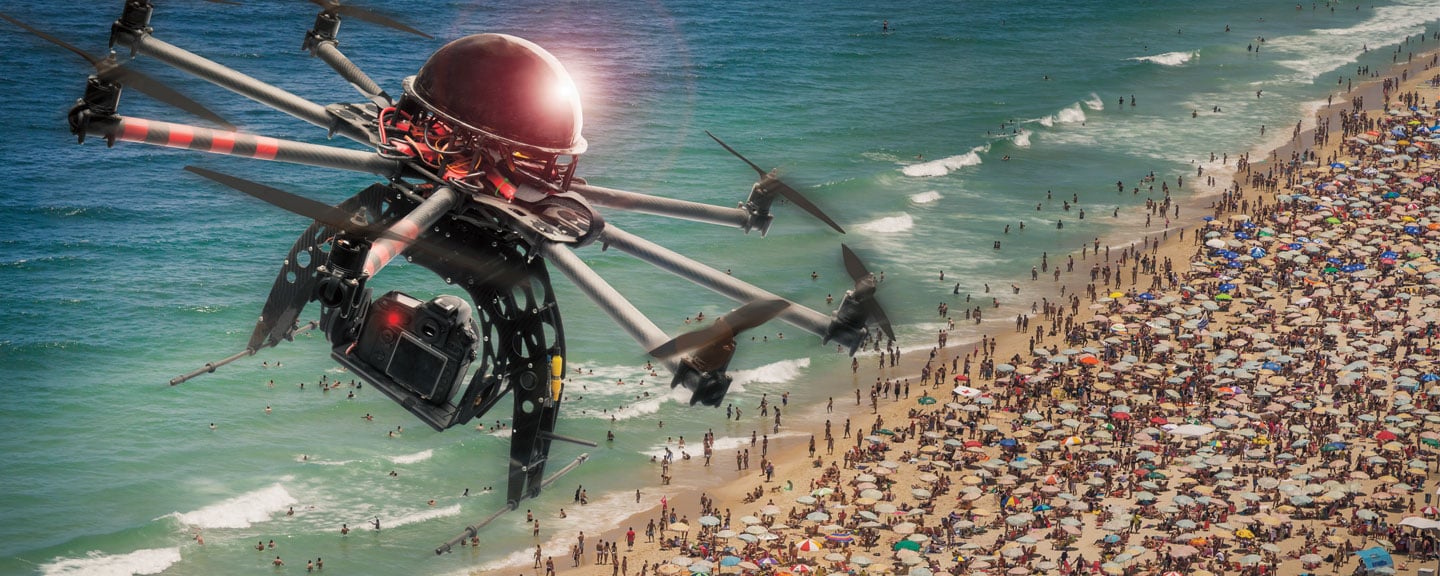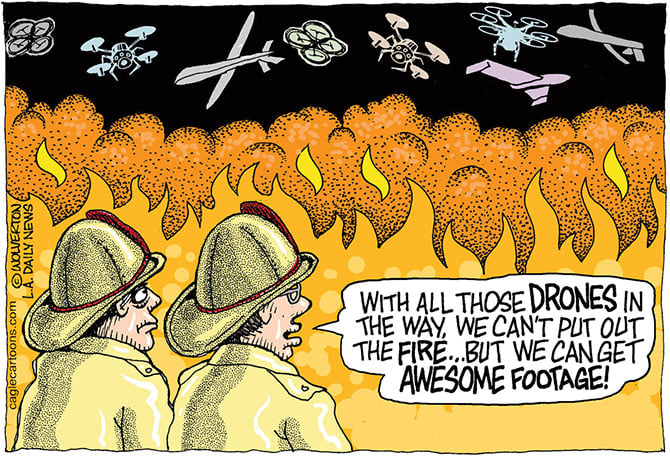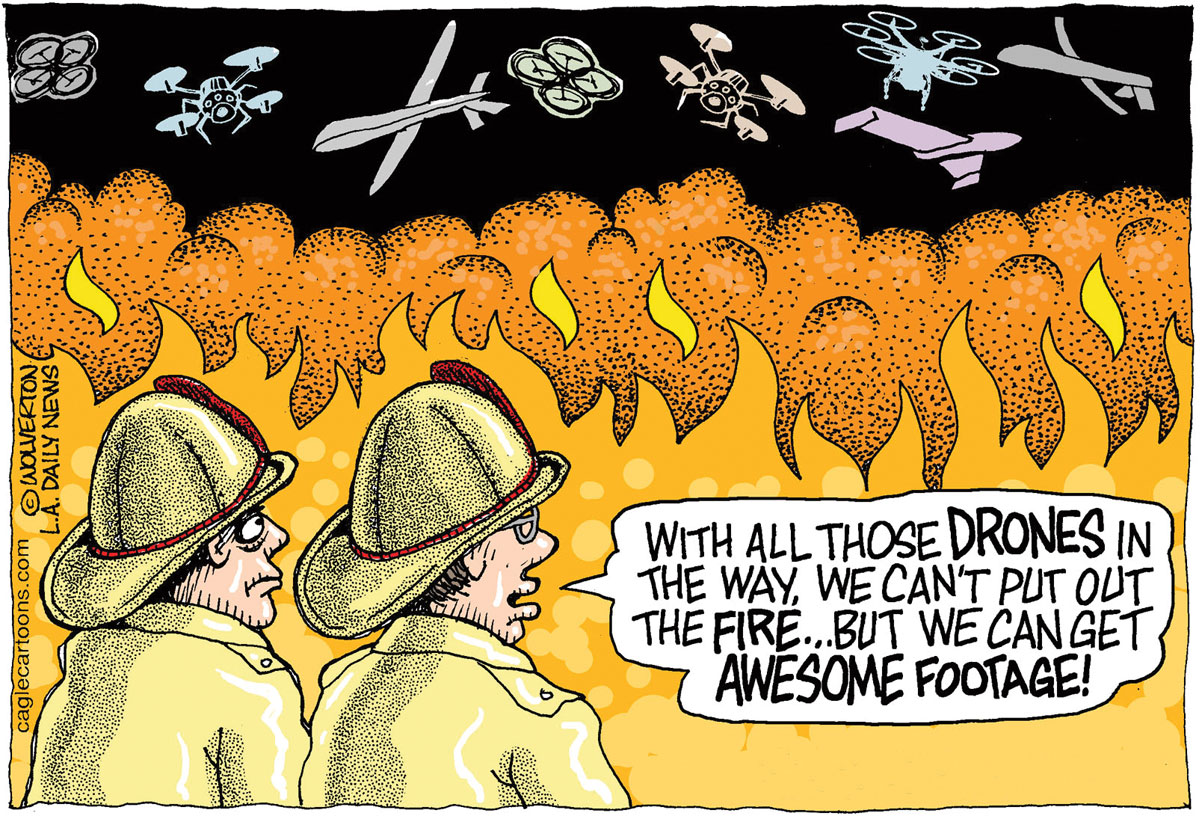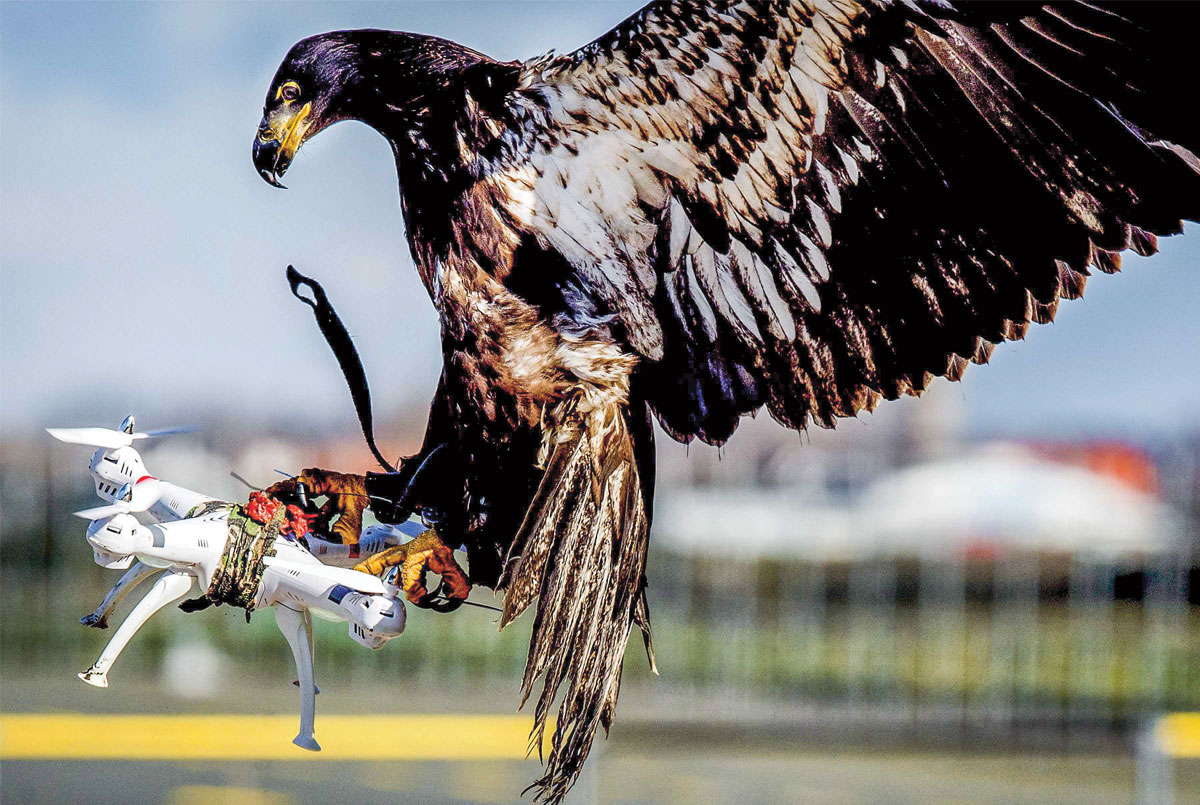This past January, two teenage surfers were saved from drowning—thanks to a drone. Lifeguards on a beach near Brisbane, Australia, were testing a new rescue drone when they were alerted to the plight of a pair of young surfers who’d gotten caught in rough water with 10-foot waves. The lifeguards steered the drone above the swimmers, which just over a minute later released a flotation device. The teens grabbed on and swam safely to shore.
About six months earlier, a major operation to combat a wildfire near Prescott, Arizona, came grinding to a halt—also because of a drone. Last July, firefighters were battling a fast-spreading blaze in the Prescott National Forest. Planes and helicopters were taking to the air to drop fire retardant and assist the crews when they were abruptly ordered to land. Why? A civilian was trying to get pictures of the fire with his drone and was endangering the whole operation. A drone “could easily get into the blades of a helicopter and take it down,” says Tyler Clare, a firefighter who was at the scene.









